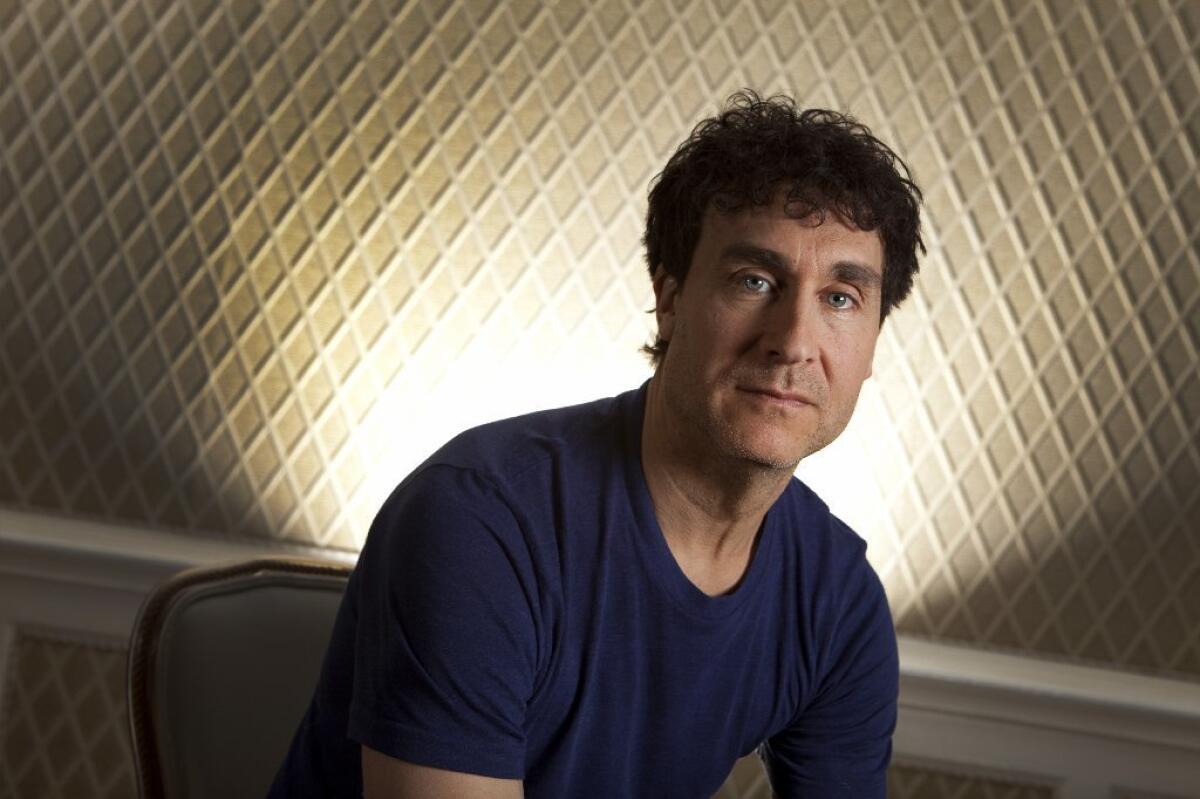Unveiling the first major virtual reality TV series, ‘Invisible,’ from director Doug Liman

Over its short but eventful life, modern virtual reality has yielded notable pieces involving concerts, sports, outdoor-adventure experiences, vérité documentary, Hollywood movie marketing and Pixar-esque shorts.
Rarely, though, has it seen a traditional scripted series.
A new production, “Invisible,” from the director Doug Liman, Condé Nast Entertainment and the VR company Jaunt, will change all of that.
The series, which is being formally released Thursday on many major VR headset systems — including Samsung’s Gear VR, Oculus’ Rift and the HTC Vive — offers five episodes of about six minutes each. It follows the episodic format of a network prime-time soap, with the plot turns, cliffhangers and — maybe most important — editing common to the form. In so doing, it brings mainstream Hollywood and VR as close as they’ve ever been.
“Everyone understands that what’s really going to drive VR into the mainstream is content, and what mainstream content is rooted in is propulsive stories and characters,” said Tom Vance, Jaunt’s head of content.
Or as Liman puts it, “If we don’t try scripted, then VR is going to be really boring.”
Liman created “Invisible” in collaboration with screenwriter Melisa Wallack (“Dallas Buyers Club”), directed the first episode and served as a showrunner of sorts. Samsung, Condé Nast Entertainment (under former CW entertainment chief Dawn Ostroff), Julina Tatlock’s interactive company 30 Ninjas and a newly content-focused Jaunt backed it as producers; Lexus is a sponsor of the free series.
“Invisible” concerns the Ashlands, a mysterious family that sees its dynamics upended, and secrets revealed, when its patriarch dies. That leaves do-gooder granddaughter Tatiana (Sofia Black-D’elia) to take over the family empire and contend with both a dissenting uncle and a burgeoning conspiracy about a superhero-like power.
But story specifics are likely to take a back seat to the question of whether narrative can work in VR in the first place. Liman and the other directors use many of the techniques familiar to TV audiences. Eschewing the wisdom that editing in VR can look like teleportation or induce dizziness — and that pacing needs to be slowed down in a medium this immersive — “Invisible” moves ahead full-throttle, packing each short segment with all the turns of an hourlong TV episode.
The result is an experience that can accessibly look and feel like traditional television, even as it can also have a head-whipping effect both visually and narratively.
The piece grew out of a comic book project Liman and Wallack had been developing. It was made on a larger scale than most VR content, filmed on location in places such as New York and Haiti.
Liman, the veteran director known both for indie phenomenon “Swingers” and Hollywood action vehicles such as “The Bourne Identity” and “Mr. & Mrs. Smith,” is well positioned to take on a scripted VR series, bringing an interest in new technology and a flair for commercial storytelling.
As he took a breather at a New York post-production facility recently, the director said he was motivated by wanting to learn about a new method of filmmaking, just as he was when he made the jump to big-budget Hollywood.
But while the series follows the kind of glitzy, plot-driven work he’s known for on the big screen, he soon learned that VR posed a new set of challenges. “You can never go into production without a firm plan,” Liman said. “But we quickly realized we had to throw that plan out the window.”
Among the reasons is VR’s potential for multiple events to happen simultaneously. Filmmakers have long found this both promising and vexing, and sought to take advantage of VR’s ability for action to take place all around the viewer without distracting from the main event.
This 360-degree world — Liman and Wallack dubbed it “the multiverse” — ups the chance for viewer distraction. This is not a huge concern in an experiential piece. But with scripted VR it can be more of a problem.
“You can’t control whether people are going to look — what do you do when they look away from a key point in your story?” Liman said.
One scene early in the series, set in a hospital, seeks to walk this very fine line as it features several critical conversations happening at once. Whether audiences will swivel between them quickly enough — or at all — remains to be seen.
Liman also noted that editing between scenes was a challenge, a balance between moving the story forward and giving viewers time to explore.
Equally tricky is the matter of editing within a scene. Because a VR viewer can see everything at all times, the traditional means of cutting from wide shots to close-ups, or between conversation partners, was not available.
“Films and TV shows are made in the editing room — performances are cut in the editing room — and there’s no way to do that here,” Wallack said.
Add to that the general challenges of shooting in VR — working with very new, often jury-rigged cameras, and not always knowing where to conceal them in a 360-degree shot — and “Invisible” made for an unusual shoot. “There was no formula for this, no proof case,” Vance said. “The process was pretty punk rock.”
Whether “Invisible” is deemed a success, both in audience adoption and creative execution, could go a long way to determining where the many resources being poured into the medium are directed — how much, in short, VR content will look like traditional Hollywood entertainment.
New production companies have recently been receiving cash and staffing infusions as investors place their chips on various formats. Meanwhile, Hollywood filmmakers from Michael Bay to Steven Spielberg have begun to stream into the space.
“Invisible” too is notable for its auspices. In Liman, Condé Nast and Jaunt, it has pillars of Hollywood, New York media and Silicon Valley. “Nobody had any road map for how this is going to work. But we thought it would be exciting for all us to come together to create that road map,” Ostroff said.
Vance said a second season of “Invisible” is already being planned, while Liman and Wallack are also working on a new VR project.
There was at least one advantage, the screenwriter noted, to working in such a new medium. “It’s liberating when you’re pitching and developing because no one can say something doesn’t work, because there’s no precedent of anything not working,” Wallack said.
And Liman says that for all the pitfalls, he considered a scripted series a necessary experiment.
“I can’t say any of this was easy. But we had to try. Because otherwise VR is just real life, and who wants to watch that?”
See the most-read stories in Entertainment this hour »
On Twitter: @ZeitchikLAT
ALSO:
It took the power of Batman and PlayStation VR to turn a skeptic in an almost-believer
NBA games will be streamed in virtual reality every week this season
’The Simpsons’ turns its 600th couch gag into a virtual reality ‘Planet of the Apes’ parody
More to Read
Only good movies
Get the Indie Focus newsletter, Mark Olsen's weekly guide to the world of cinema.
You may occasionally receive promotional content from the Los Angeles Times.











